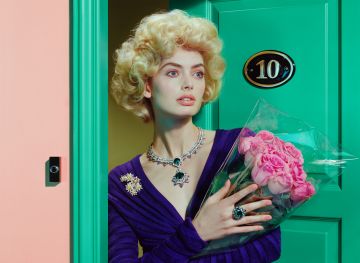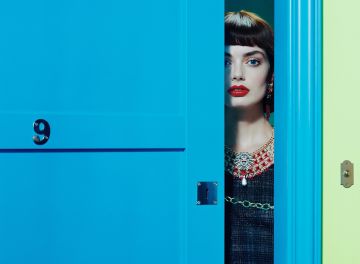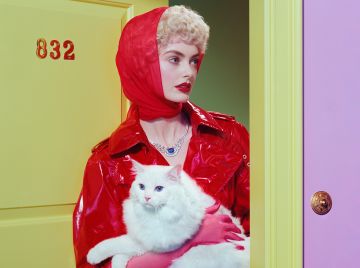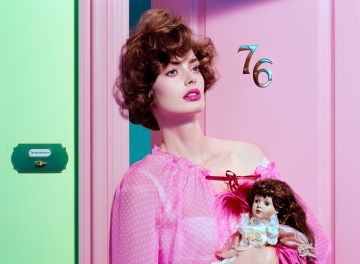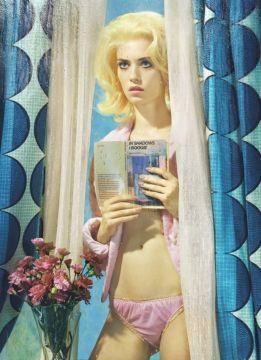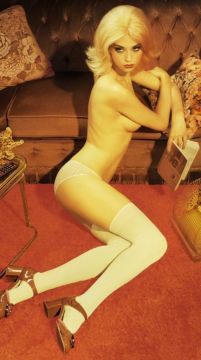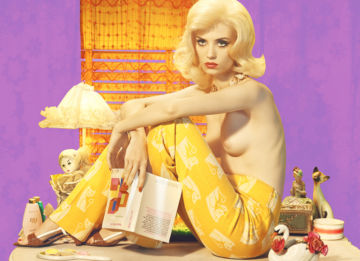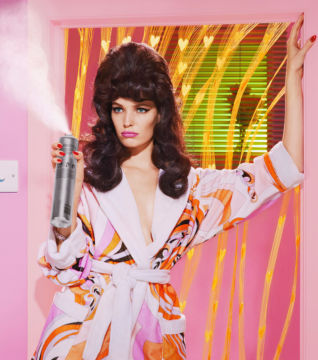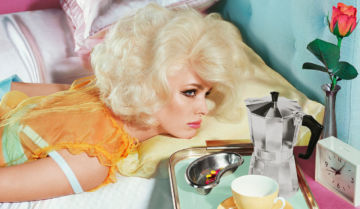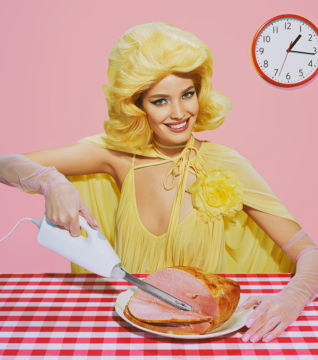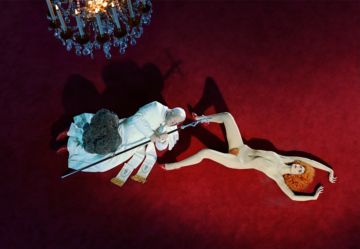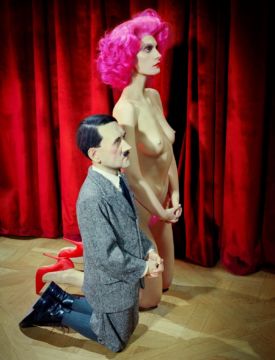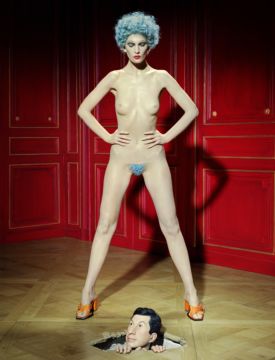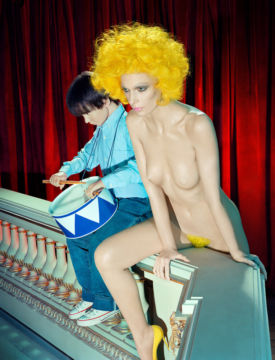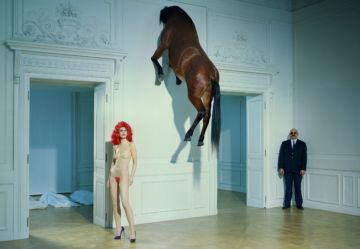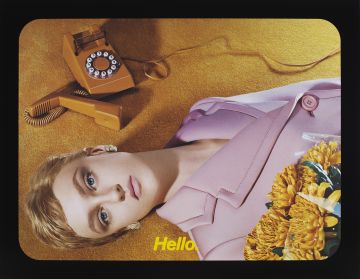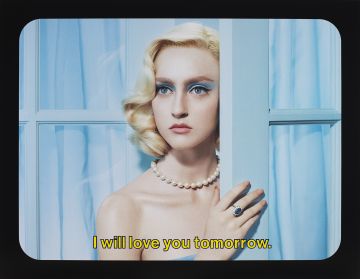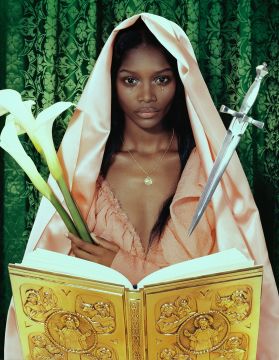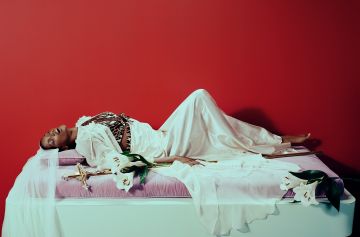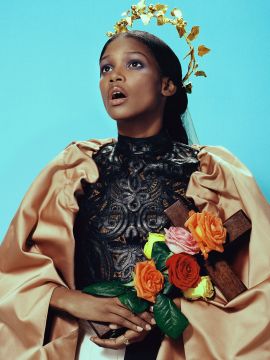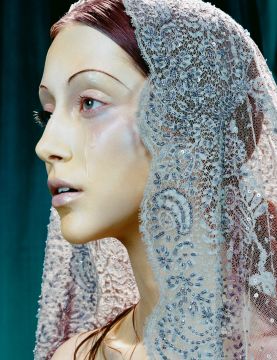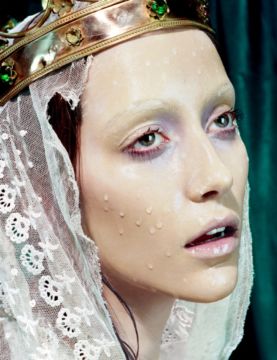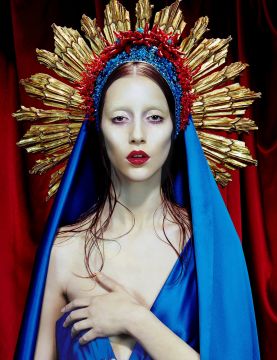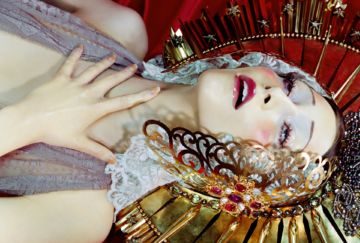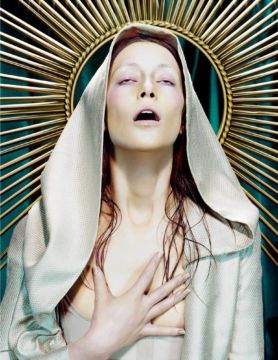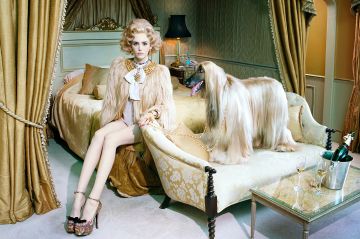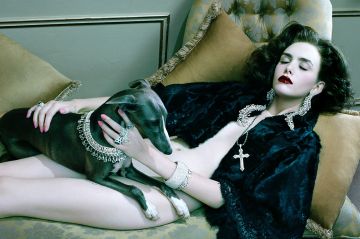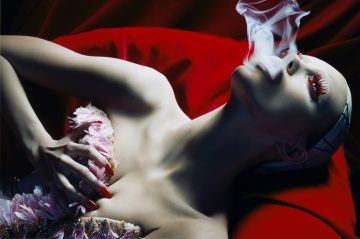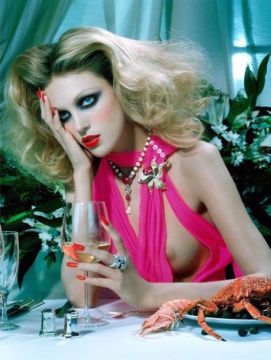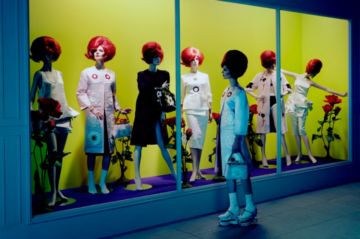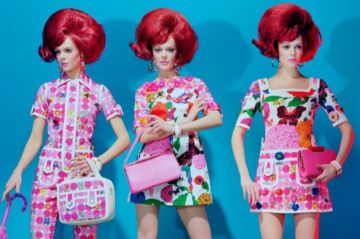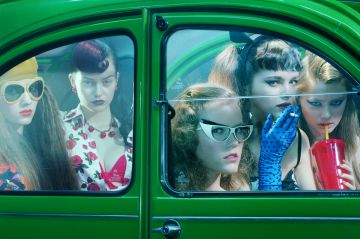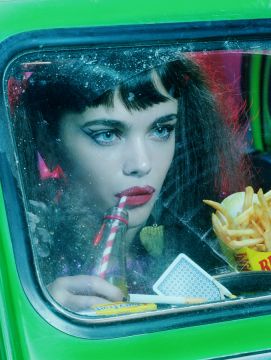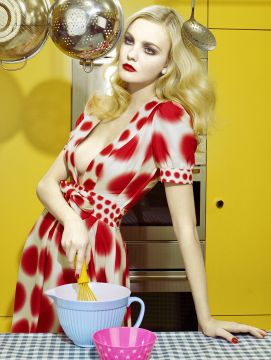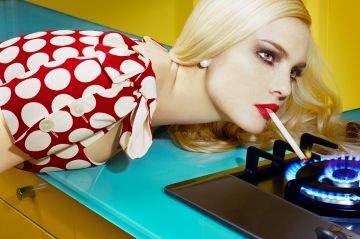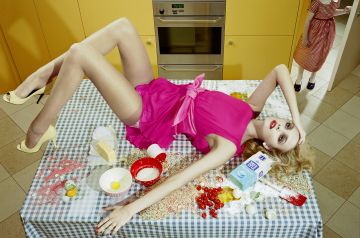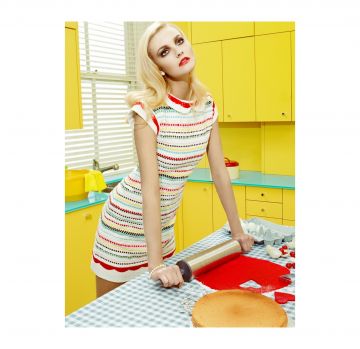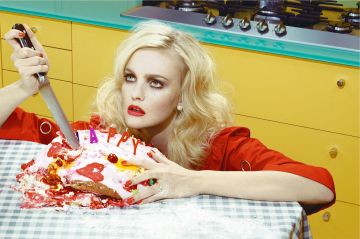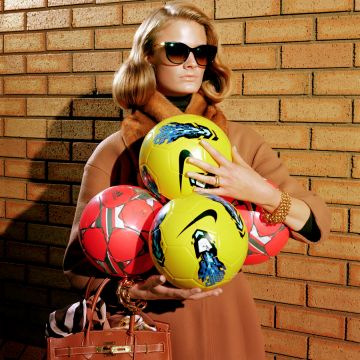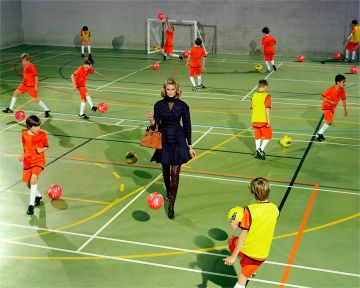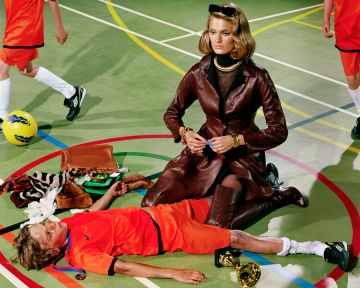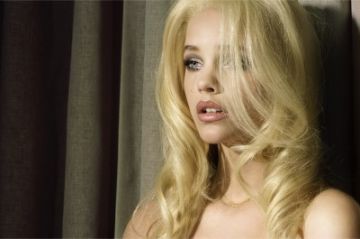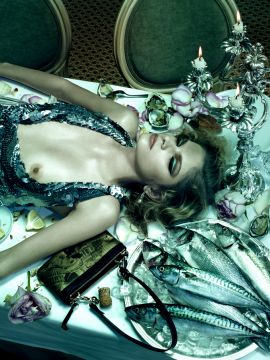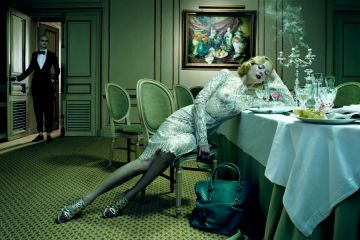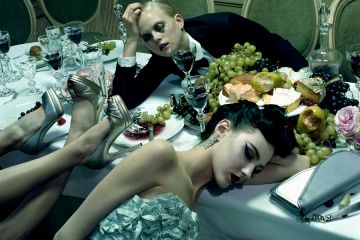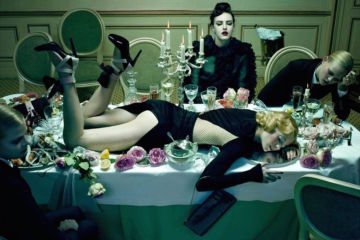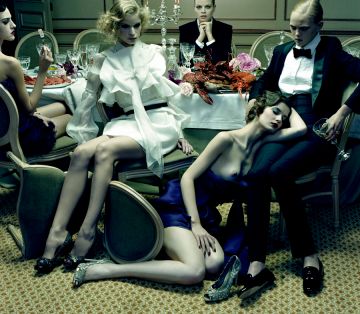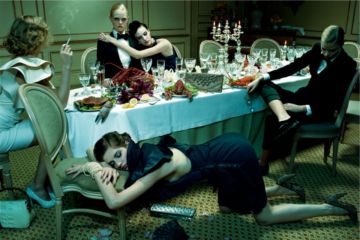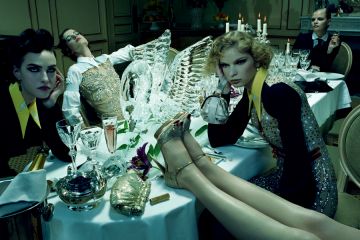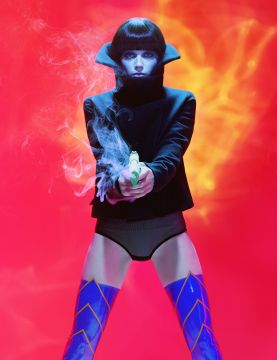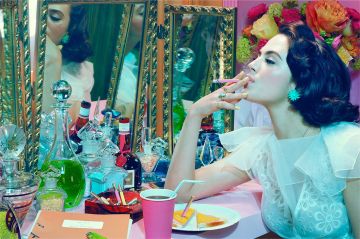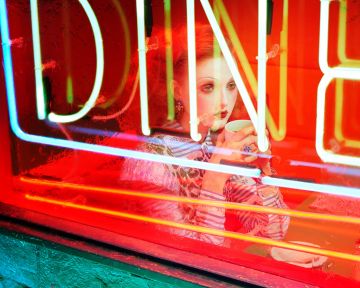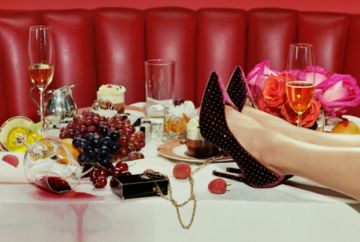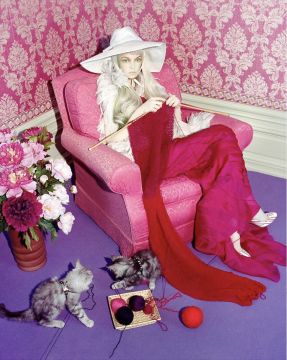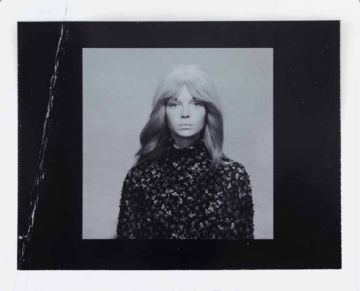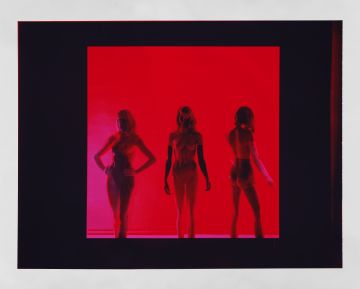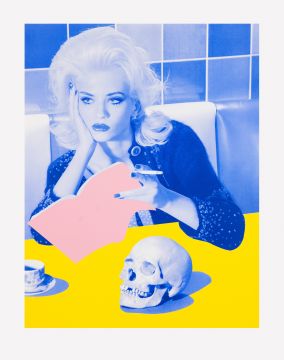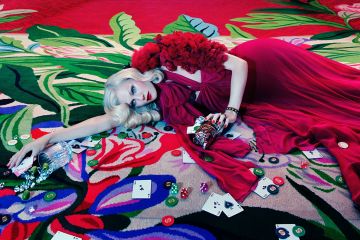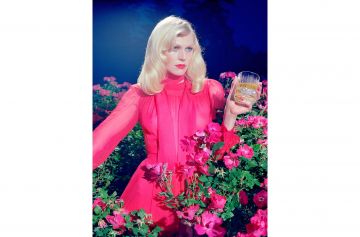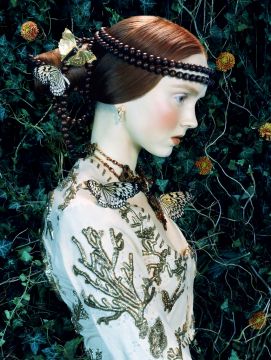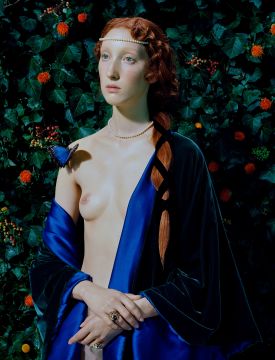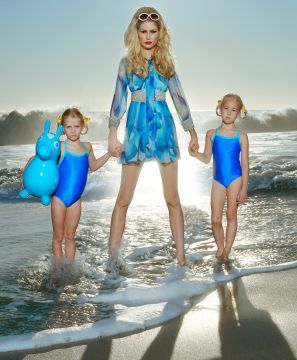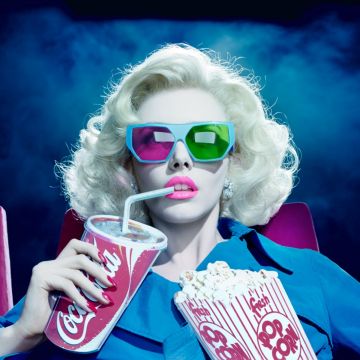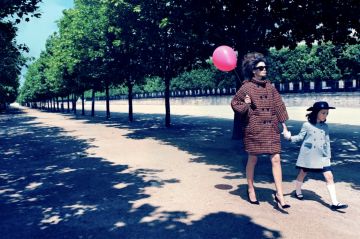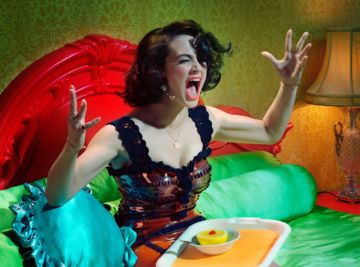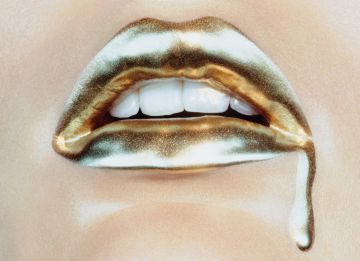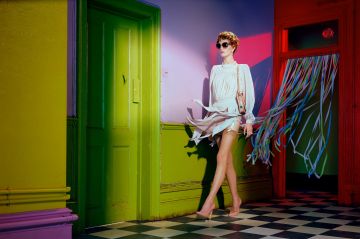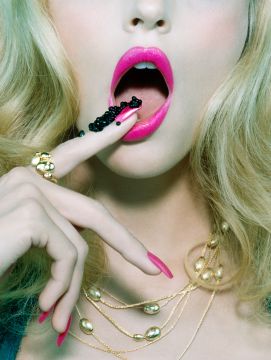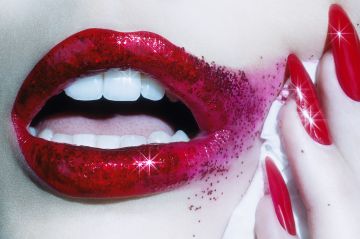Doors
(after Miller)
The series ‘After Miller’ sees Aldridge’s response to the work of painter Harland Miller, appropriating his well-known penguin book cover paintings within his own pin-up scenes, thus creating a tandem of personalities which comment on the social psyche of growing up in the 1960s and 1970s. As art critic Michael Bracewell comments on Aldridge: ‘In his work, the tension of film noir conflates with Pop and post-Pop vibrancy; what could be tableaux of science fictional erotica mingle with a hyper-stylized account of domestic British vernacular; the visual language of a mid-twentieth century centrefold pin-up articulates icily depersonalized desire.’
New Utopias
In his series 'New Utopia' Miles Aldridge attempts to explore the collision of popular culture with so called serious Art, where the smiling model advertising new appliances is elevated to the status of the goddesses depicted in the Renaissance. His photographs look like paintings viewed from afar but remember of the pages of magazines in close-up. The technique of screenprinting lends itself perfectly to this task, allowing large scale prints made up of the coloured dots characteristic of magazine printing. The additional use of silver ink highlights the various products simultaneously referencing the use of gold leaf in Renaissance altarpieces while being part of the visual language of Pop Art. The New Utopias are the Apotheosis of modern life; divine and banal. The mundane is loaded with seriousness and the profound is only a moment away from the ridicule.
(after Cattelan)
In his work with Maurizio Cattelan, the artist invited Aldridge to respond to his retrospective exhibition in Paris by allowing him to shoot his own responses to Cattelan's work after the museum closed at night. The phenomenal images to emerge from Aldridge's night at the museum must be witnessed at first hand. (After Cattelan): proposes instantly compelling narratives–and most invitingly, several different narratives, potentially, simultaneously. It is as though each image can be comprised of various distinct and individual stories–just as Marcel Proust referred to himself as 'the many gentleman of whom I am comprised.' The iconography of historic and moral meaning, of good and evil, becomes an absurdist boudoir. The image exemplifies postmodern Romanticism, and the reclamation of romantic irony – the palette of a neo-Gothic fantasy: an urgent and persistent need for spectacle and sensation, ritual, the bizarre, unhinged and uncanny, disruption, heightened style, games seduction, exaggerated emotion, fear, poetry, elegy, wonder, perversity, awe, violence, irreverence, myth, voyeurism, intellectual imagination and wit, the beckoning unknown and unknowable–in the fact of technology and time, the world shrunk and the universe explained.
Subtitles
‘This series of screenprints extends and enhances the influence of cinema on the photographic practice of Miles Aldridge, further exploring the mood and allure of theatrically constructed images. Artifice is everywhere in these screenprints, proposing figure, setting and event as both immediate and static – reprising the aesthetic of the tableau vivant as it might be conceived by Luis Buñuel or Eric Rohmer. Aldridge has long been fascinated by the transposition of suspense – as it might occur in film noir – to the mise-en-scene of sexually loaded pictorial narratives. These narratives, here broken down into the film-still idiom of individual sub-titled scenes, become at once visually amplified and ambiguous. Pictorially, each screenprint depicts an open-ended dramatic image that calls on both the coldness and glamour of Pop art. While proposing a scene with dialogue – the urbane high passion of European cinema is implied – they resemble frozen fragments of mass media. Insoluble mysteries, as present yet remote as a billboard, acting in silence.’
– Michael Bracewell
'Hello and I Will Love You Tomorrow are the first screenprints from a new series entitled Subtitles. Printed on 410 gsm Somerset paper in three passes – a matt halftone dot, a high gloss black border and the subtitles in a satin acid yellow. Both screenprints are available either unframed or in a polished aluminium frame designed by the artist.'
– Miles Aldridge
